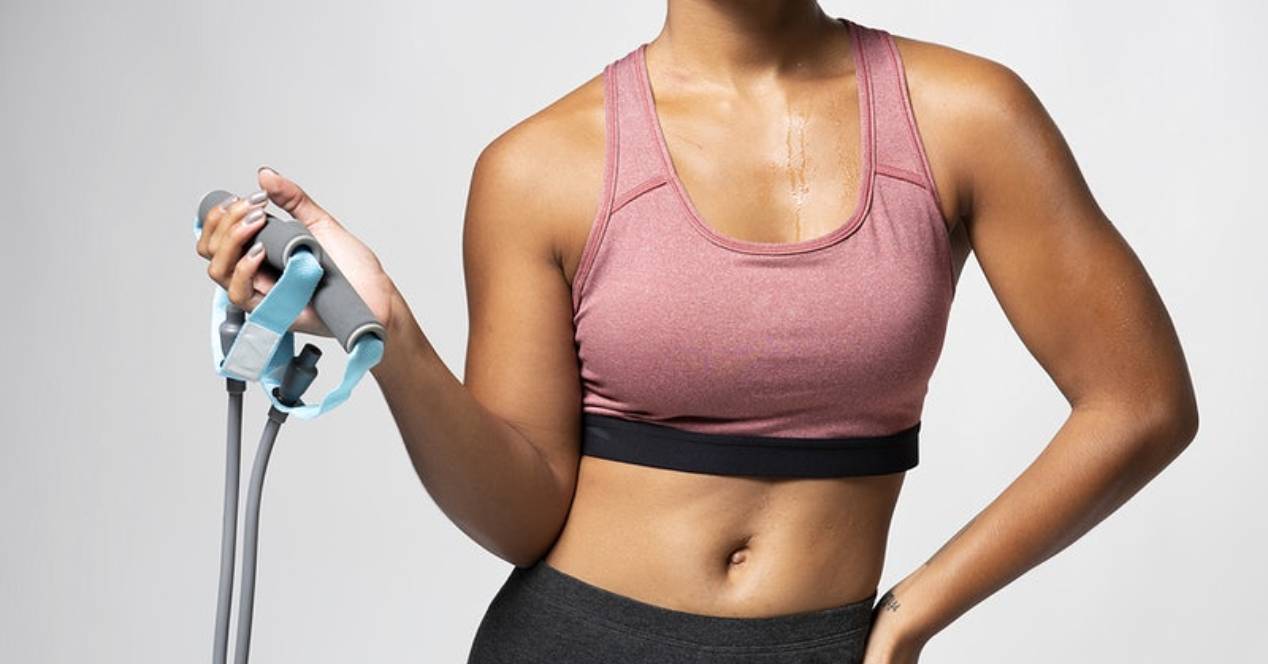
Classic shoulder training can be based on overhead pressing and lateral raises. But internal and external shoulder rotations with elastic bands are an underrated exercise that you don't want to leave out of your workout.
This exercise is based on engaging the joint by closing and opening towards and away from the body. The main difference between internal and external rotations is that internal rotation involves bringing the shoulder in toward the body; while the external distances the joint. Rotations emphasize working the front deltoids, latissimus dorsi, pectoralis major, teres major in the back, and subscapularis, one of the four rotator cuff muscles. The externals strengthen the rear deltoids, as well as the infraspinatus and teres minor, two other rotator cuff muscles that stabilize the shoulder blades.
This is certainly a fairly safe exercise for most people and is a common rehab exercise for shoulder injuries. However, anyone who has had previous shoulder injuries (or is experiencing pain or pinching) should speak with a physical therapist before trying new movements.
Benefits of doing shoulder rotations
These types of exercises help the good movement of the joint, not only during training, but also in daily life. Next, we analyze the great advantages of including these rotations.
Reduce the risk of shoulder injuries
Although surrounded by small stabilizing muscles, the shoulders are the least stable joints in the body. And when muscles don't get enough attention, joints become even more susceptible to injury.
That's why it's recommended to incorporate internal and external shoulder rotations into your warm-up routine. Waking up these little stabilizers before your upper body workouts can help keep your shoulders stable and secure throughout the rest of your workout.
Improve training performance
Heated shoulders are not only safer, they are also stronger. These exercises improve upper back and shoulder alignment, which can help move more weight in exercises like deadlifts and lunges with displacement.
To make this resistance band shoulder exercise more or less challenging, all we have to do is get further or closer to the band's anchor point. Or, if you have a set of multiple bands, you can simply choose one with higher or lower resistance.
They develop strength and shoulder muscles
Internal and external shoulder rotations are great warm-up exercises, but the movements can also stand on their own in strength training. You can do shoulder external rotation with a dumbbell to be more precise with the amount of resistance you're using and track your progress.
Making them one of the best exercises for the shoulder, rotations hit the normally neglected rotator cuff muscles. To build the most strength and muscle, focus on bringing each set to fatigue. By the end of your set, we should feel like that was the last rep we could do with good technique.

How to do shoulder rotations with bands?
There are those who use dumbbells to perform the exercise, although the most appropriate is the use of an elastic band. This material makes the resistance is maximum when stretching, but minimum when beginning the movement. Unlike dumbbells, which always provide the same resistance throughout the exercise.
shoulder internal rotation
- Attach a resistance band to a sturdy machine, rack, or column, at torso height. Stand up, so that it is to your left.
- Hold the free end of the band in your left hand and take several steps away from the anchor point until the band is stretched.
- Stand tall with your left elbow bent to 90 degrees and pressed against your side.
- Starting with your forearm out to your side, pull the band toward the center of your body while keeping your elbow tight to your side.
- Pause, then slowly return to the band at your side.
shoulder external rotation
- Attach a resistance band to a sturdy object at torso height. Stand up so that you are to the right.
- Hold the free end of the band in your left hand and take several steps away from the anchor point until the band is stretched. The band should be crossed in front of the body.
- Stand tall with your left elbow bent at 90 degrees and press into your side.
- Starting with your forearm diagonally across your body, pull the band away from the anchor to your side while keeping your elbow tight to your side.
- Pause, then slowly return the band in front of you.
Tips to do them correctly
It is important to take into account some recommendations to do shoulder rotations without injuring ourselves. These movements should help warm up the joint, not make it worse.
keep elbows still
When the elbow moves away from the side, you start to lose some of the intended benefits of the exercise. To help keep the elbow bent, it is recommended to place a rolled towel between the elbow and ribs. This will keep us focused on keeping it in place throughout the exercise.
As we work on not dropping the towel, the technique of the movement will automatically improve. As the sessions go by, we will automatically control the movement of the elbows.
Use light resistance
Because these exercises target small stabilizing muscles in the shoulder, don't expect to move a lot of weight (with bands).
If we're having a hard time doing 8-10 reps with good technique, use a lighter resistance or stand closer to the band's anchor point. These are exercises that we should not normally load heavier than allowed for a maximum of 8 or 10 repetitions.
move with control
You have to keep the movement as precise as possible. We can't let the gang give orders and we must resist the temptation to swing our arm or take advantage of the momentum.
If we have trouble keeping a slow and steady pace, we can try counting 2 seconds in motion, a 1 second pause, and then 2 seconds to start again.
tighten the abdomen
You have to keep the abdominals contracted with the hips and shoulders forward. We must avoid twisting the torso while pulling the resistance band and avoid arching the lower back.
One of the best tricks is to squeeze the glutes to help maximize stability during the movement. This will also get your core and glutes started to activate during the warm up.
Shoulder rotation variations
In order to not only do the shoulder rotations that we have seen above, there are certain variations that improve the movement and attack the shoulder at different angles.
External output with bands
- Attach a resistance band to a sturdy object at torso height. Stand up so that you are to the right.
- Grab the free end of the band with your left hand. The band should cross in front of the body.
- Stand tall with your left elbow bent to 90 degrees and pressed against your side. Place a rolled towel between your elbow and ribs if necessary. You have to hold this position.
- Take several steps to your left until the band is at full resistance.
- Reverse the movement.
Internal exit with bands
- Attach a resistance band to a sturdy object at torso height. Stand so that you are to the right.
- Grab the free end of the band with your right hand.
- Stand tall with your right elbow bent to 90 degrees and pressed against your side. Place a rolled towel between your elbow and ribs. Hold this position.
- Take several steps to your left until the band is at full resistance.
- Reverse the movement.
Dumbbell Shoulder External Rotation
- Lie on your left side with your knees stacked and bent at a 90 degree angle.
- Hold a light dumbbell in your right hand, parallel to the floor.
- Keep your elbow snug against your right side, bent at 90 degrees.
- Bring the dumbbell toward the ceiling, keeping your elbow stable.
- Reverse the movement and return to the starting position.
- Do all the reps, then switch sides.